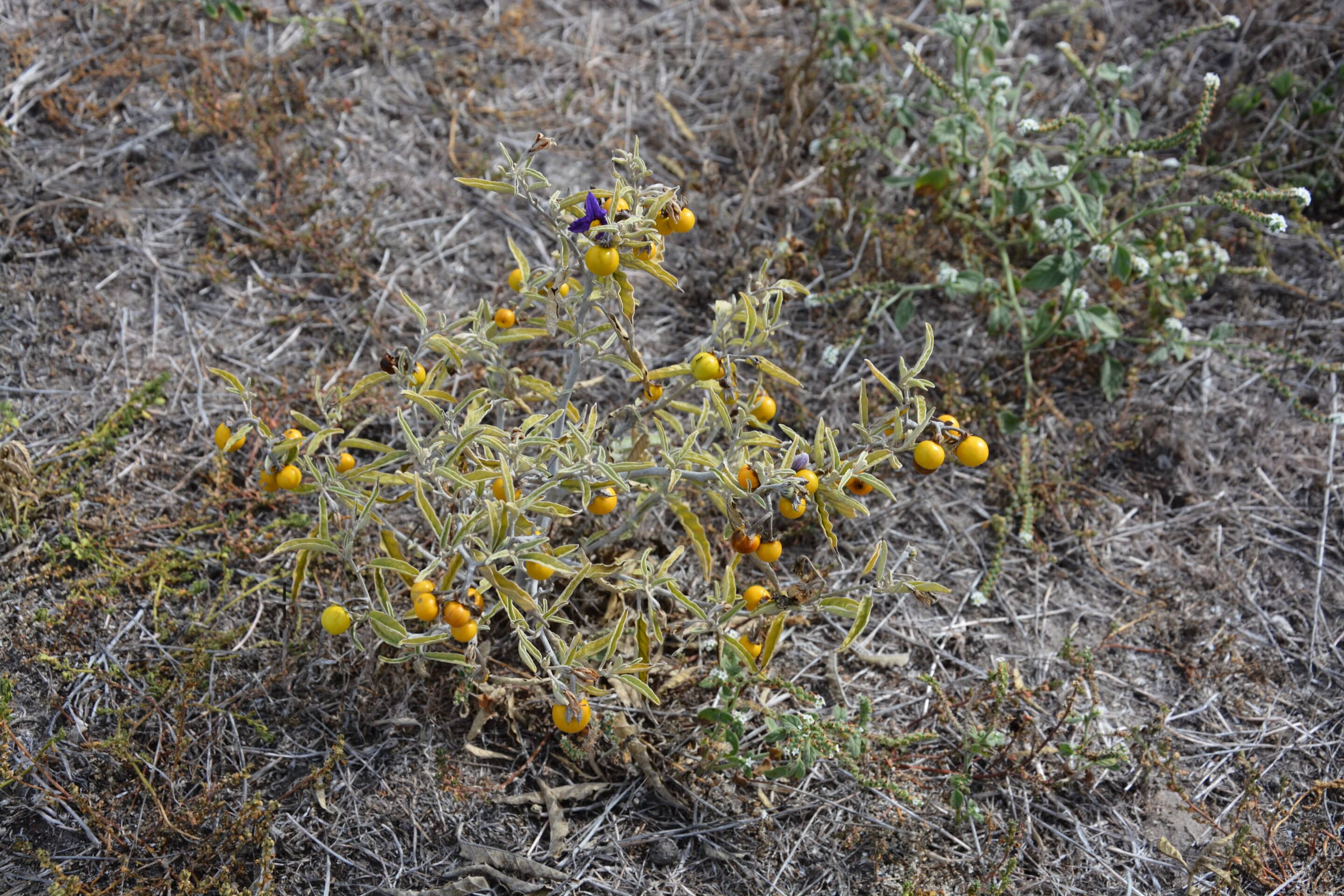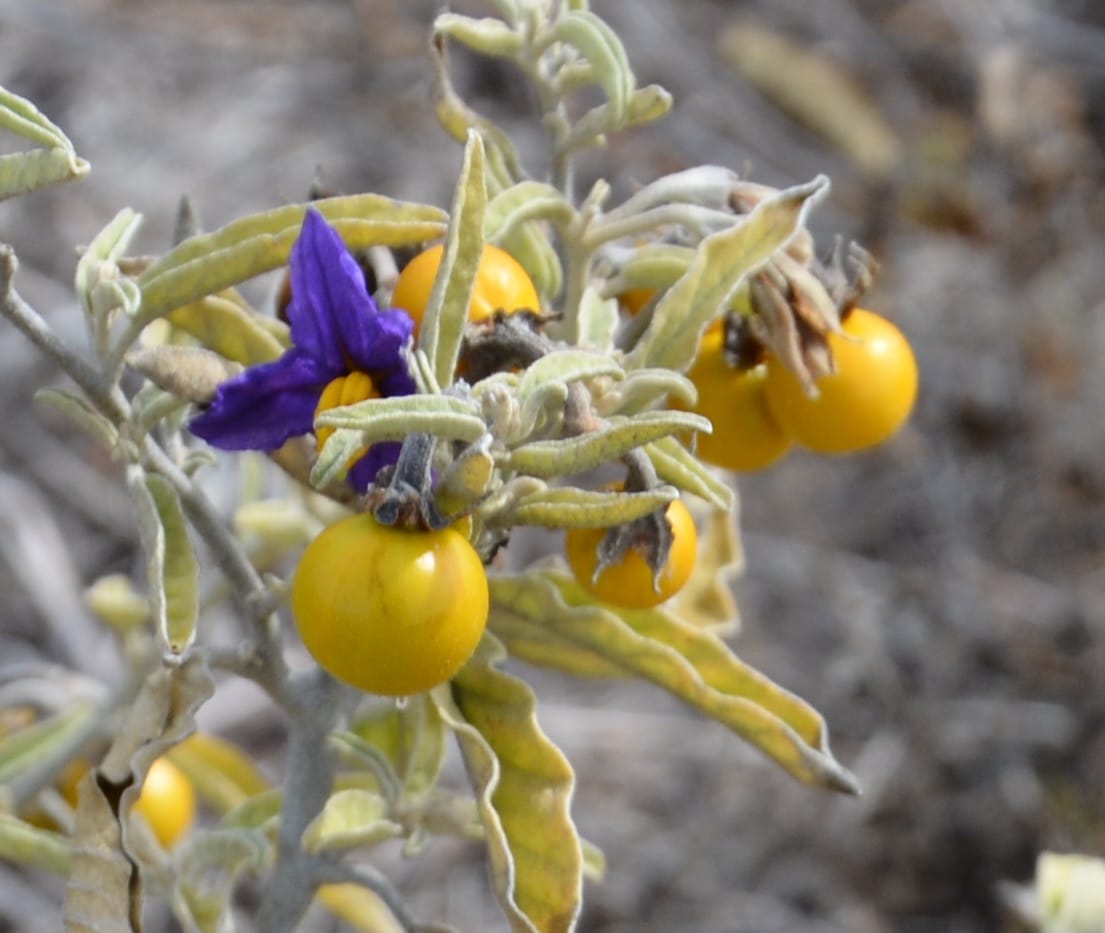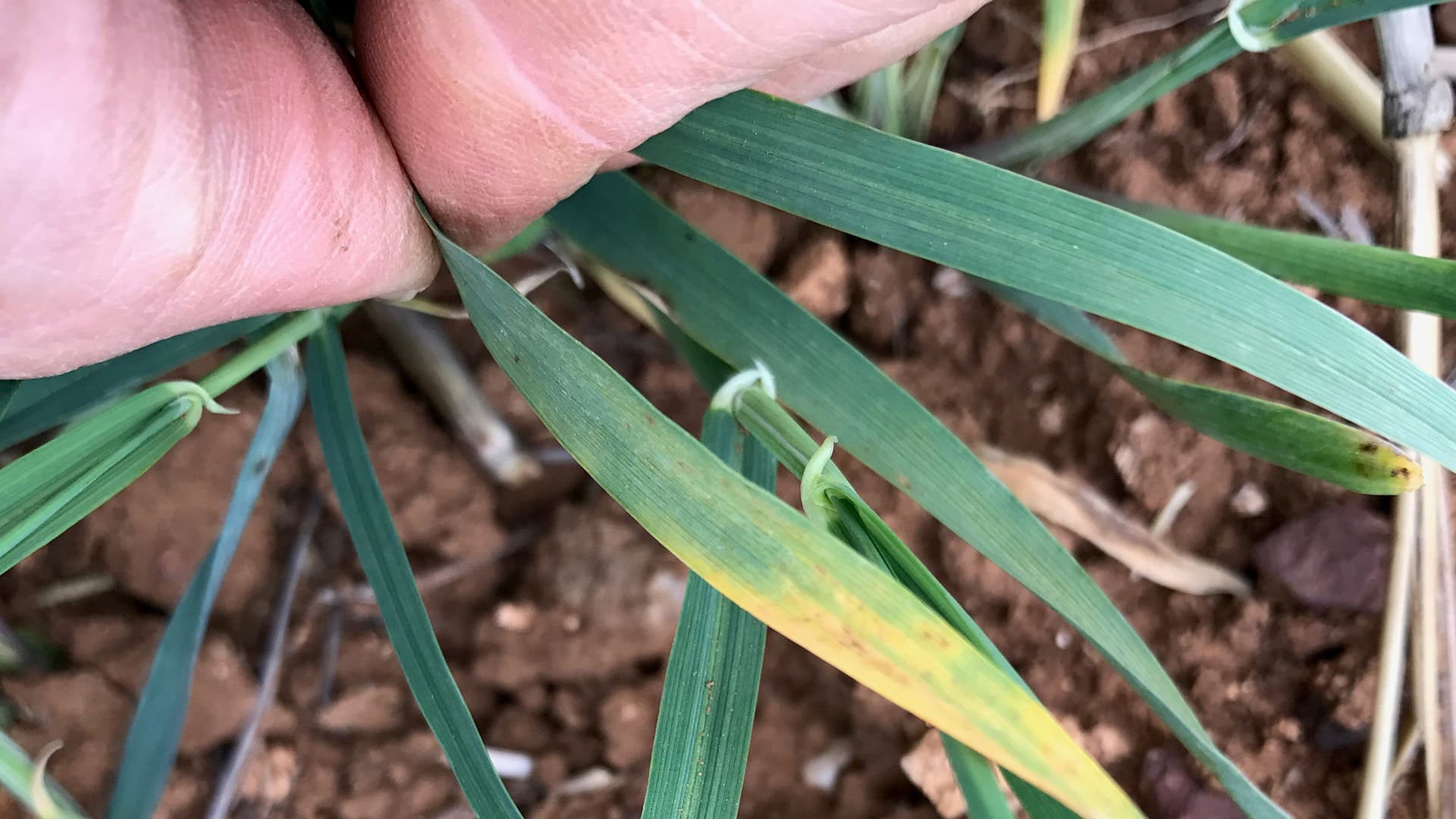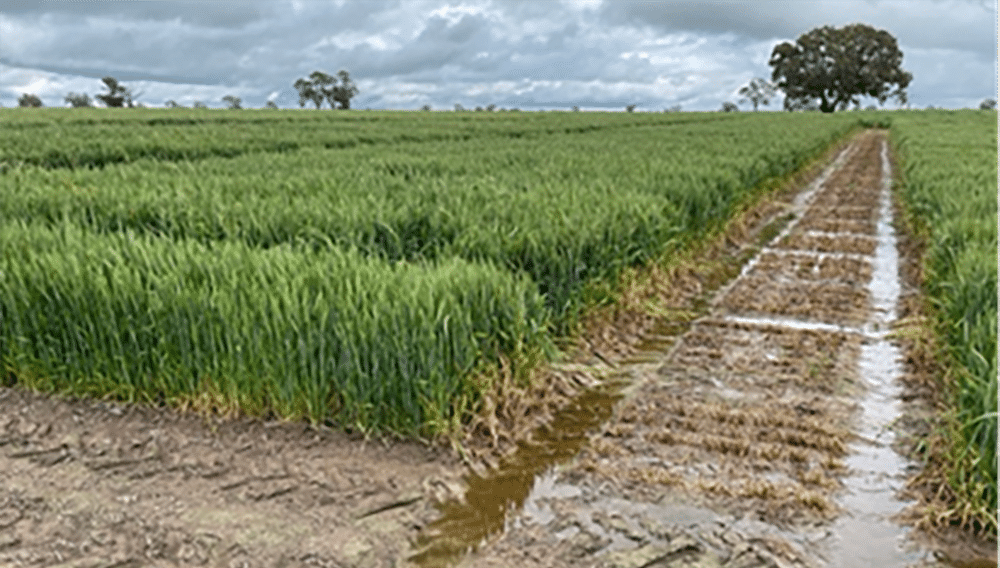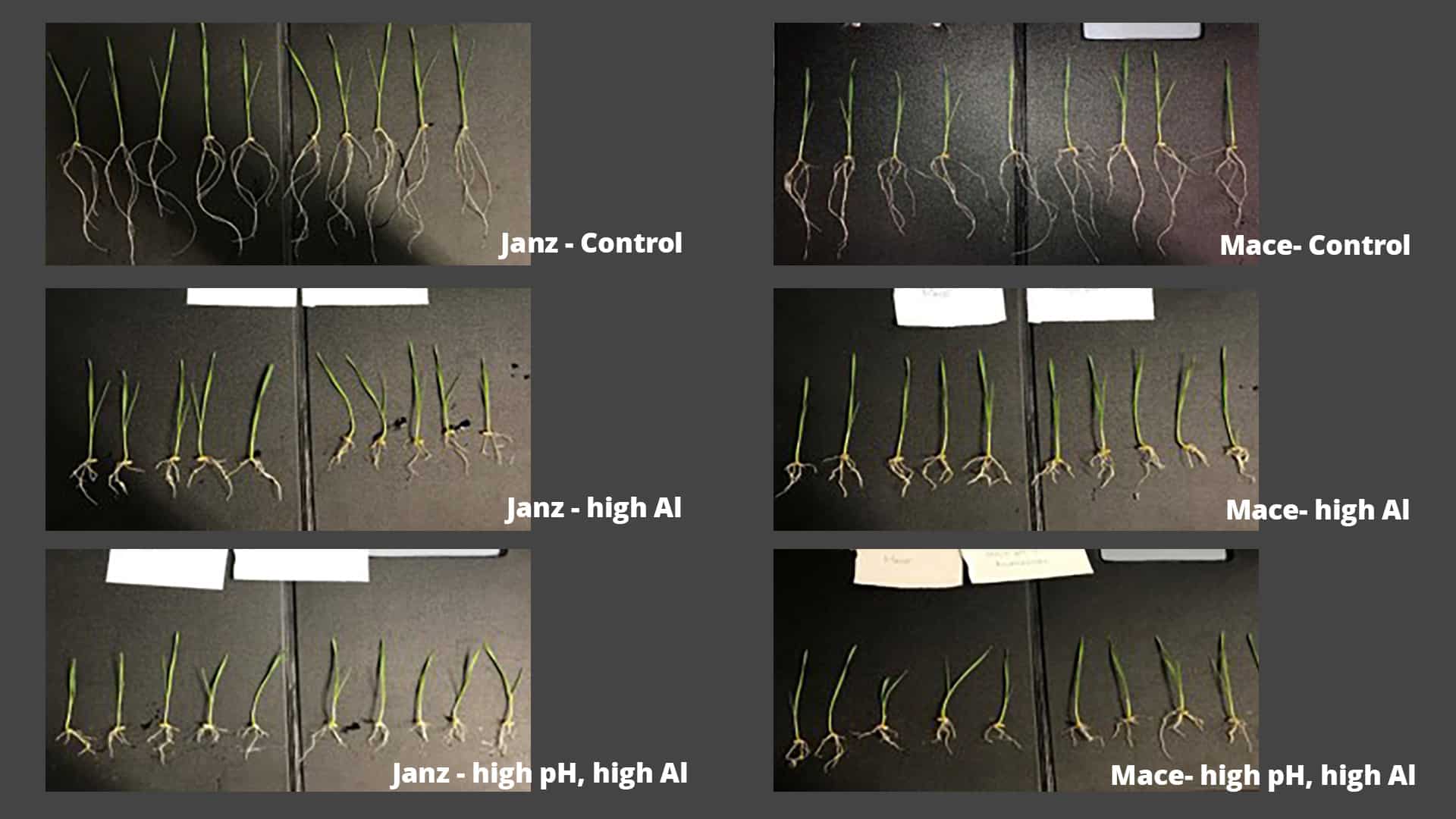START
FINISH
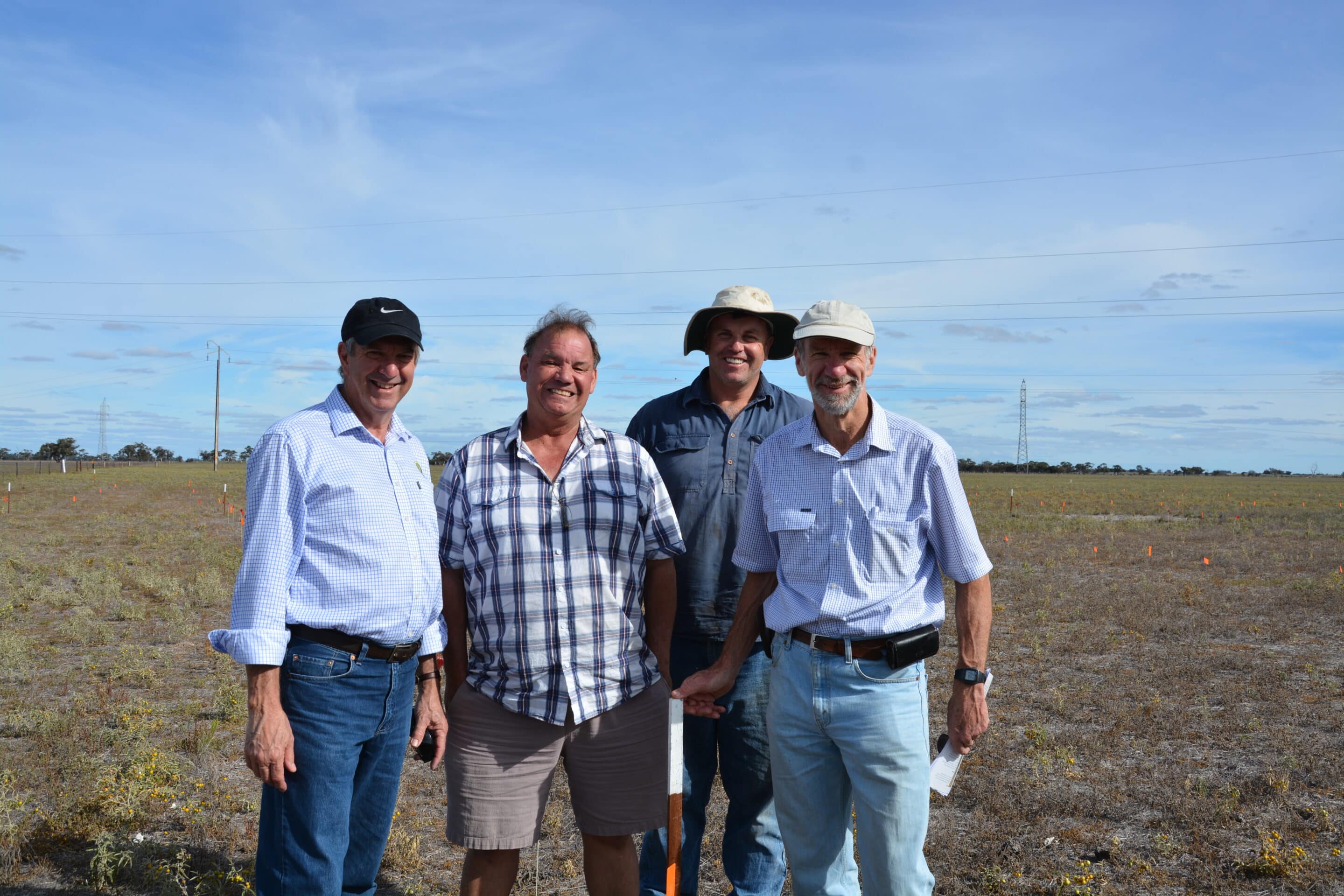
Summary
This project built on existing results from PIRSA 0113 to capture data over a total of six consecutive summers, following three consecutive annual herbicide treatments.
It is rare that farmers are provided with long-term data on weed management, but this project has shown that results over this time span are especially valuable for assessing the cumulative herbicide effect and economic returns from perennial weed management.
Background
International research on control of silverleaf nightshade (SLN) with herbicides has been ongoing since the 1960s. Results from Australia have confirmed that established SLN is extremely difficult to kill. Although there has been some success, notably using picloram or glyphosate, herbicides typically only suppress shoot growth. Herbicides capable of killing established plants with one application are expensive and sterilize the soil for years. These herbicides are useful to control small infestations but are not suited to controlling large established infestations in agricultural enterprises.
Experience and experimental results suggest that, although shoot re-growth follows most herbicide applications, there is some damage to the SLN root system. Annual applications may be expected to slowly deplete carbohydrate stores in the root system, leading to eventual reduction in plant vigour and density.
Research Aims
The core objectives of the project were:
- To summarise six years of field trials at Warnertown and Keith to measure the long term effect of three approaches to SLN control – broadacre trials, spot spraying, and large plot eradication using intensive glyphosate application.
- To identify the most effective herbicides and rates for long term reduction in SLN density at each site.
- To provide growers with more reliable information to manage SLN in cropping rotations.
In The Field
Sites were chosen near Warnertown (red sandy loam) and near Keith (white sand over clay). Three experiments were duplicated at each site, and were situated together on dense, even stands of SLN on flat ground. SLN density was recorded before initial treatments were applied, then in January and December 2015, January and December 2017, and December 2018.
Results
Three years after the third season of successive applications of glyphosate (1.62 kilograms active ingredient per hectare (a.i. ha-1), weed density was reduced by 90 per cent at Warnertown and 83 per cent at Keith. It therefore appears possible that long-term use of broad-acre herbicide applications could reduce shoot density to a point where spot spraying is feasible.
Reduction of shoot density requires a persistent long-term commitment, using robust herbicide application rates.
- Glyphosate at 3 L Prod. ha-1 (540g/L), with added Pulse® (0.2%), appears to be the most suitable treatment for SLN, repeated in late summer/autumn if seasonal conditions allow.
- Glyphosate at 1.62 kg a.i. ha-1 was more effective than 0.81 kg a.i. ha-1 in the long-term, despite the lower rate killing shoots in the short-term.
- Pulse® penetrant increased the efficacy of glyphosate and should be considered as a standard adjuvant with SLN.
- Starane Advanced® (fluroxypyr) at 200 grams a.i. ha-1 has the potential to reduce shoot density over the long-term and is as effective as 2,4-D amine.
- Uragan® and Graslan® (8 kg ha-1) were the most effective spot spraying treatments.
Interim and final results from the project were presented to a number of farmer groups and conferences.
Project Participants
Dr John Heap, PIRSA
The Problem
Long term data was needed to assess the cumulative herbicide effect and economic returns of perennial silverleaf nightshade (SLN) management.
The research
Field experiments near Keith and Warnertown measured the long-term effects of successive annual herbicide treatments on SLN density.
More information
Dr John Heap
T: 0428 833 119
Value for Growers
Six years of field research into control of deep-rooted perennial weeds provided more reliable data than a three-year study.
The results confirm that SLN management with herbicides should be approached as a long-term undertaking in contrast to opportunistic control with other summer weeds using just enough glyphosate and partner herbicides to control the annual weeds and desiccate SLN shoots.
Although application of relatively low rates of glyphosate or Starane® may kill above ground SLN shoots, along with annual summer weeds, these results show that the additional cost of higher rates may be warranted by the useful reduction in SLN shoot density over several years.
The results indicate optimum rates of herbicides for long term reduction of SLN shoots.

